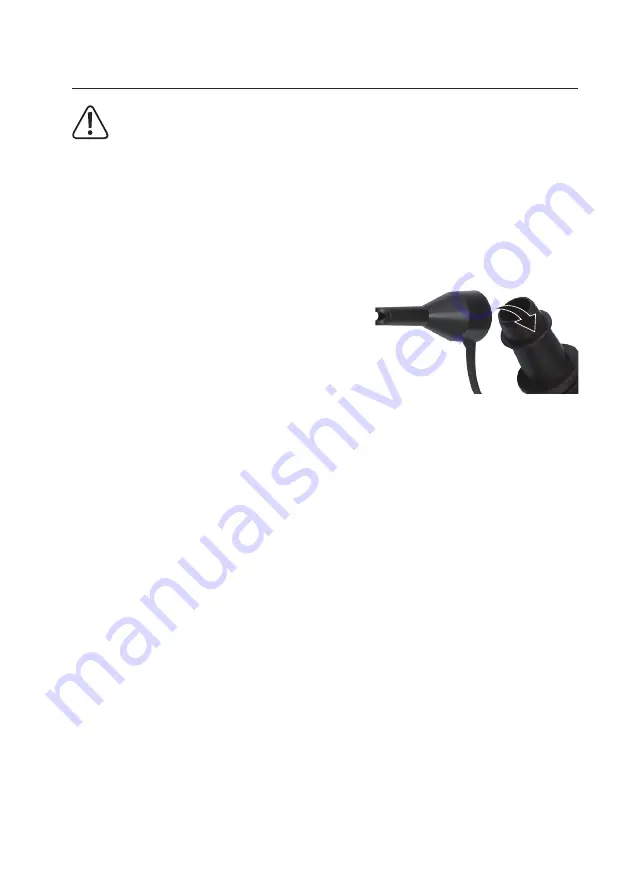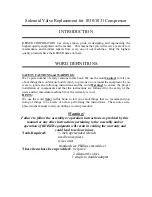
26
11.
Low Pressure Hose
Overheating can occur if the low pressure hose (9) is blocked. Always check that the low pressure hose is
free of obstructions. Disconnect the pinch valve adaptor (5) when not in use.
To help protect the hose from breaking, do not use excessive force when connecting or disconnecting the
hose from the compressor.
The low pressure hose is used to inflate low pressure items such as air mattresses, pools, and floats. Use
a precision gauge for low pressures.
The low pressure hose can be used to extract air from inflated items.
a) Pinch Valve Adaptor
• The low pressure hose (9) comes with a pinch valve adaptor at-
tached to the tip (5). It is used for items with smaller openings or
pinch valves.
• Insert the pinch valve adaptor into a pinch valve so that the tip
of the adaptor is inserted past the inner “flap” inside the valve.
b)
Inflating
• Align the slots in the hose (8)
with the pins on the sides of the inflator
(6), then turn clockwise until the parts lock
together.
•
Insert the hose tip into the item to be inflated.
• Set the power switch (3) to low pressure “
I
” to begin inflating.
•
Monitor the pressure gauge
(2), and set the power switch to
0
to turn off when the desired pressure is reached.
• Turn the hose counterclockwise until the parts unlock, then remove it.
• Store the hose in the hose wrap on the left of the unit.
c)
Deflating
•
Align the hose with the deflator
(7) opening, then push together until the hose is fully inserted.
•
Insert the hose tip into the item to be deflated.
• Set the power switch (3) to low pressure “
I
” to start deflating.
•
When the object has been deflated, set the power switch to
0
to turn off.
• Remove the hose by gently pulling it away until the parts separate.
• Store the hose in the hose wrap on the side of the unit.





































